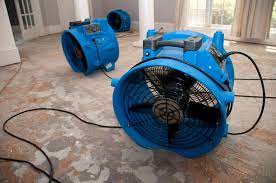Water damage,if left unchecked, can accumulate and leadto costly repair and replacement expenses. But lucky for you, it does not have to! With a little prudence and promptness, you cantake steps to minimize water damage.
Undoubtedly, the best way to deal with water damage is to contact a professional. Experts in the field would know exactly what needs to be done, and their quick judgment can help you take timely action. Typically, the first step toward controlling water damage is to dry out the areas exposed to water.
Learn all you need to know about drying out water damage in this quick blog.
Methods
There are three main approaches that can be used to dry out water damage. These are- fan, air drying, and dehumidifying. Usually, a combination of all three is used to get the most efficient and effective results.
The Process
The three main steps that need to be followed to dry the areas affected by water damage are:
- Find the Source: The first step to solving any problem is to find its root cause, and the same goes for water damage. Getting professionals for water damage restoration will allow you the benefit of a prompt diagnosis.
- Fix the leak: Once the professionals find the exact source of water, they will fix the leak to stop more water from entering the space.
- Clean up:If the water collected is clean, it simply needs to be dried up. However, if the water is grey or black, there’s a good chance of it being contaminated. In this case, a few extra steps will be taken to disinfect your house to ensure safety.
How Long Does Drying Water Damage Take?
Depending upon the amount of damage your house has sustained, water damage restoration can take anywhere between 2 days to a few weeks. The exact time taken will obviously be unique to the situation and will be affected by factors like the humidity in the air, your locale, and any objects that have sustained water damage, etc.
Finding Professional Water Damage Restoration Services
It is critical that youselect the right water damage restoration services near you. Some of the best ways are by word of mouth, reading reviews online, and selecting one that’s experienced and offers the most comprehensive services.
How do you dry out water damage?
Step 1 – Identify the cause
Before water damage can be repaired, it is imperative that the cause of the damage is known and eliminated at the start of the work in order to avoid consequential damage. If this is not the case, a leakage location is usually carried out first. With Heylo’s range of moisture measurement technology, more than 90% of leaks are found within the shortest possible time.
Step 2 – Damage prevention through preparation
Cables and pipes should be well stowed and wet floors secured to avoid potential hazards such as electric shocks. Furthermore, the water supply should be stopped and the spread of hazardous substances prevented. The room’s inventory should be salvaged or elevated if possible.
Step 3 – The drying process
The use of condensation dryers and fans prevents further expansion of the damage. As a rule, the damp surfaces will have dried sufficiently within the first three days to allow the hidden damage to cavities to be seen. If the water has penetrated materials for a long time, it will take longer to remove it again with the help of a dehumidifier. Basically, three factors have an important influence on the success of wall drying:
- The temperature
- The air humidity
- The air flow
Warm material naturally has a higher evaporation rate than cold material. In addition, warm air can absorb considerably more water vapour and carry it to the drying unit than cold air. The transfer of water vapour from the material to the room air is significantly improved by air flow. A fan should be installed in addition to every dryer set up. At temperatures below 15°C, dryers should be operated with the support of heaters.






